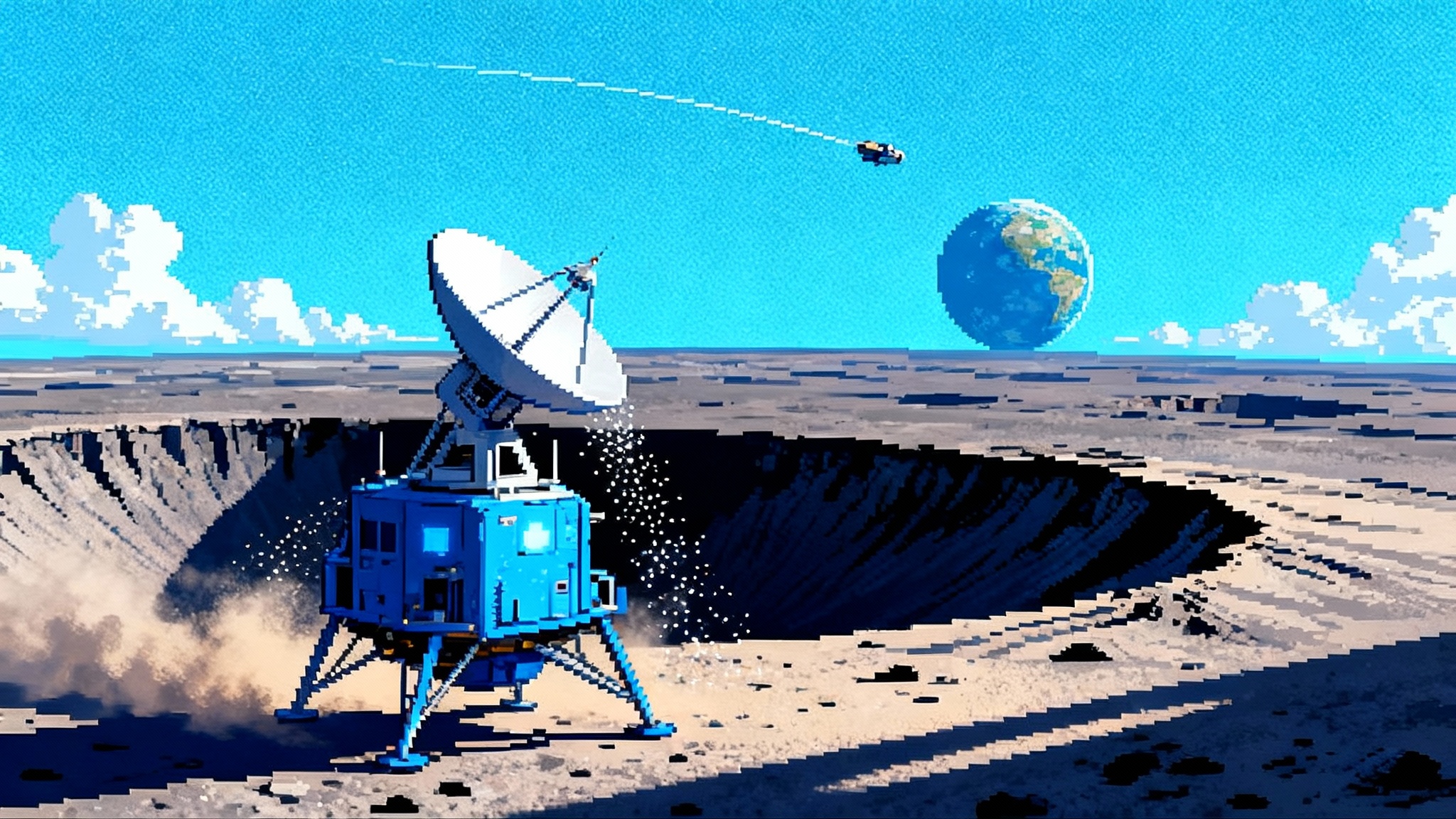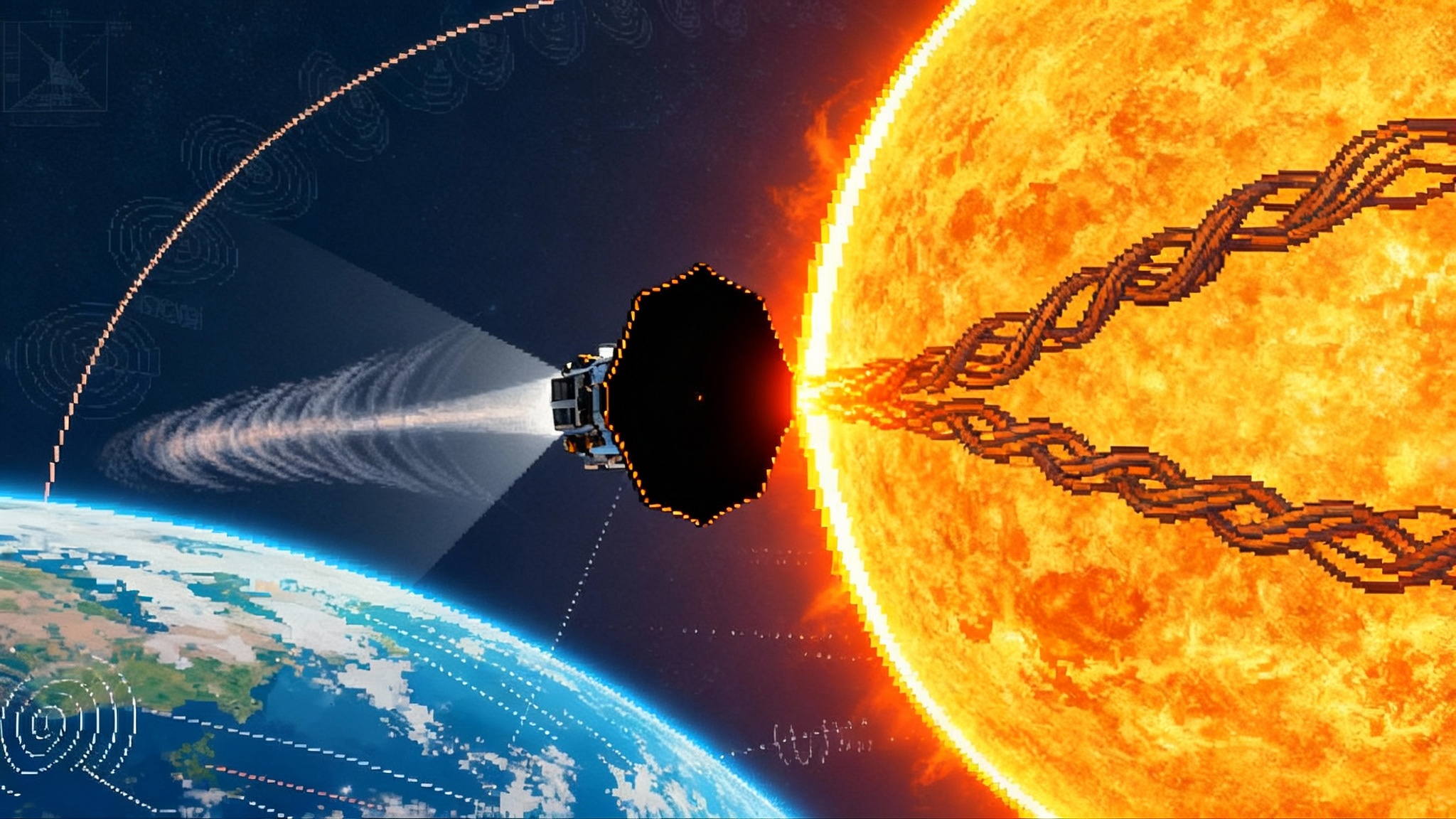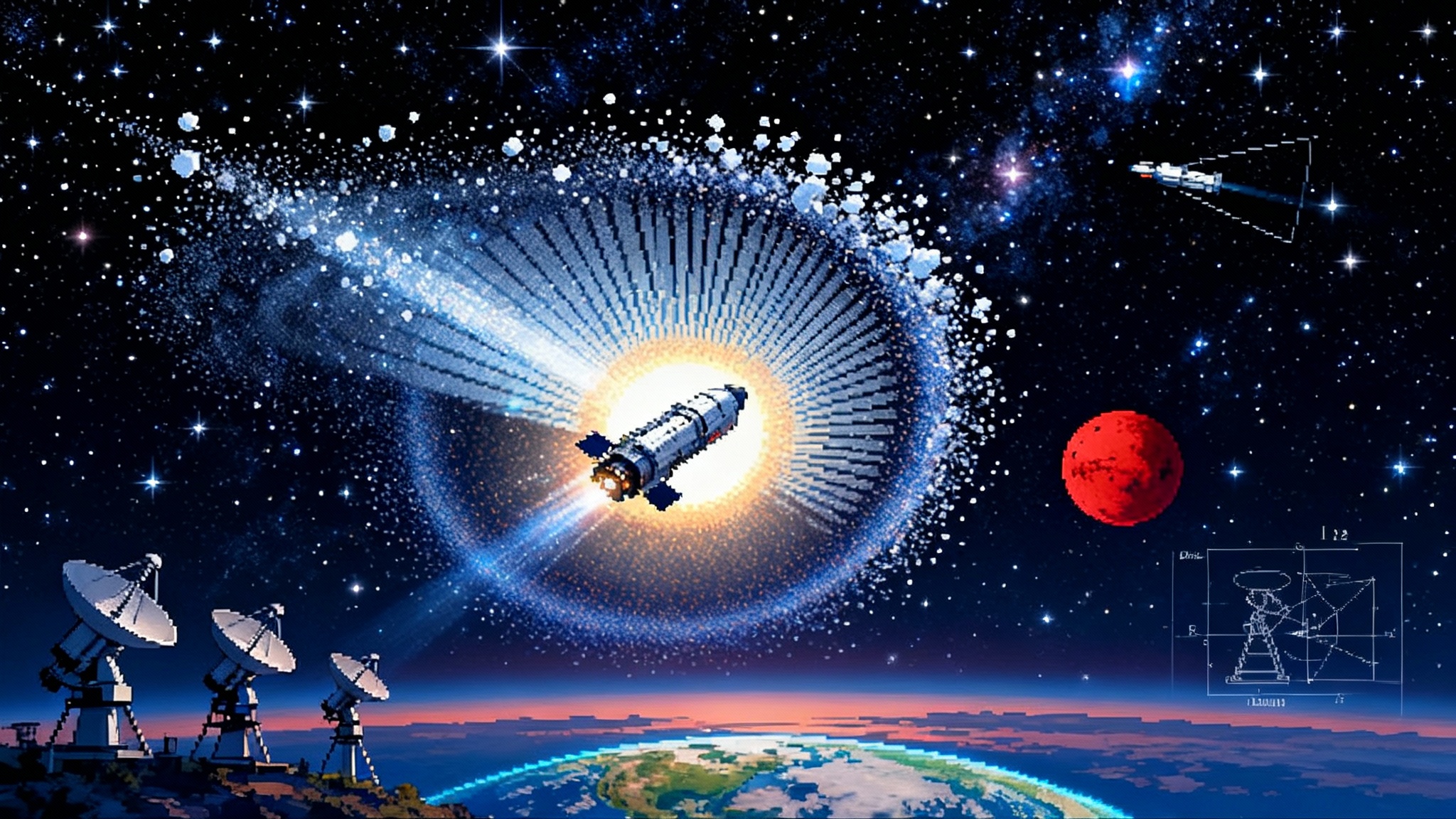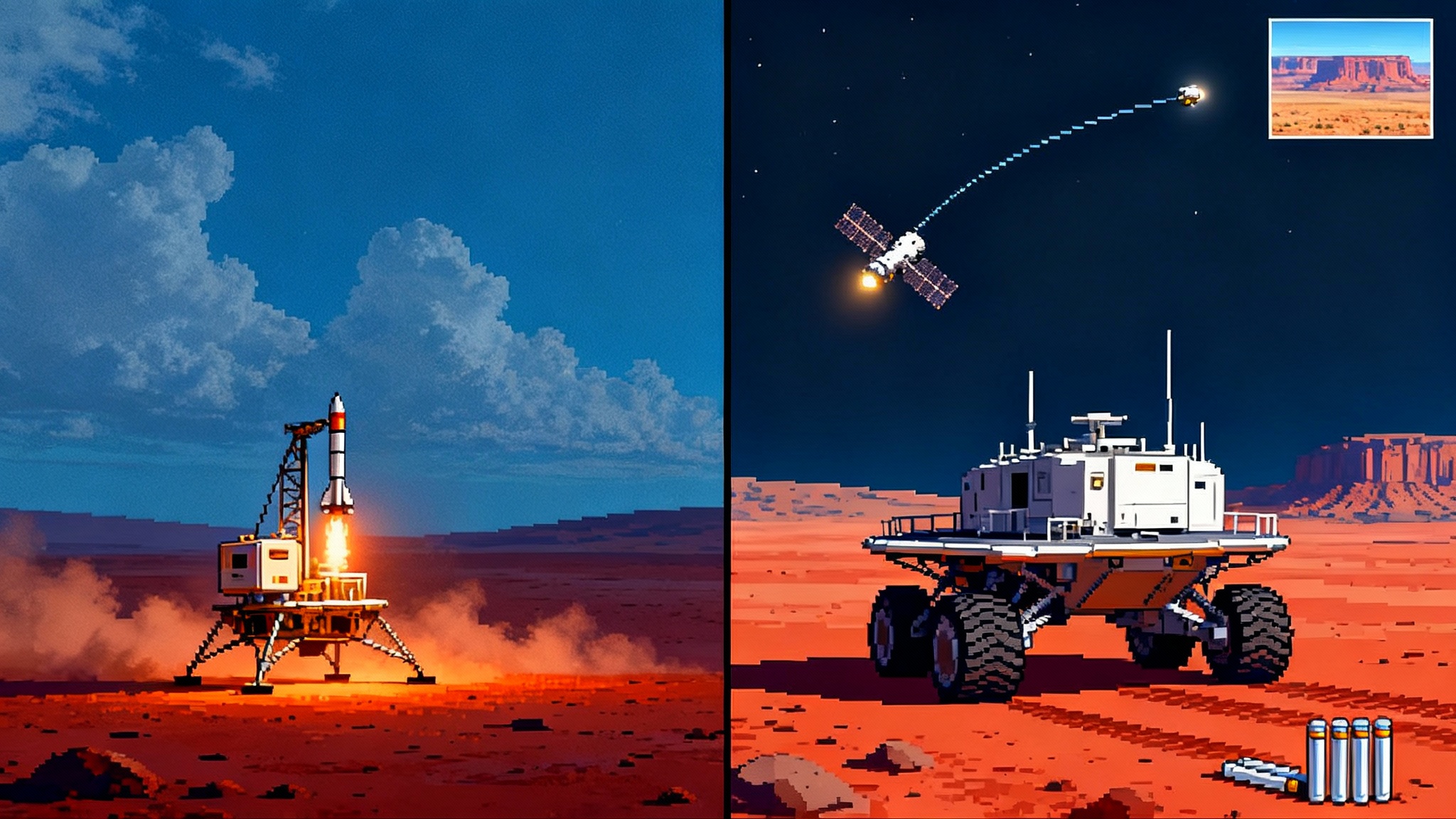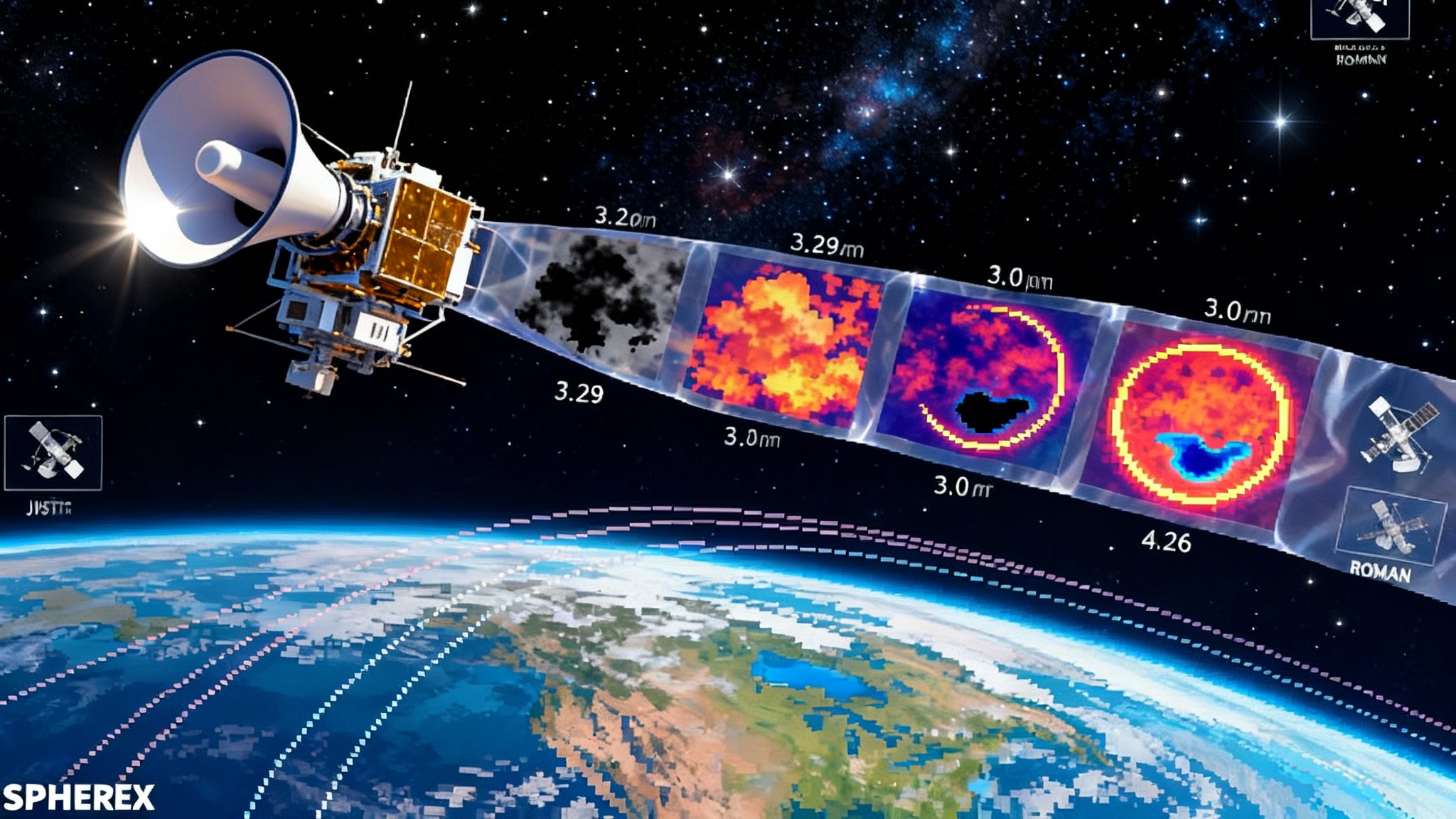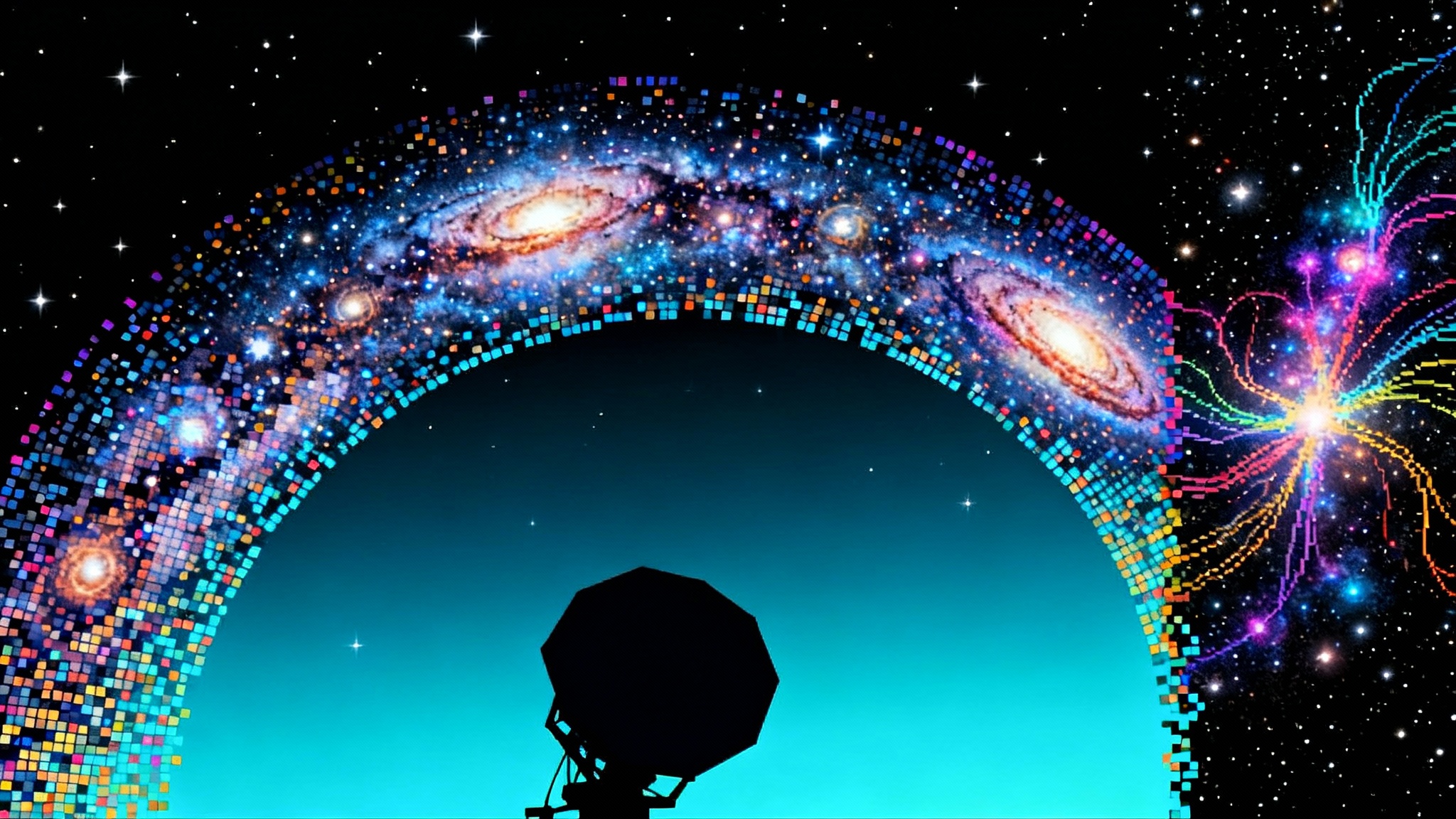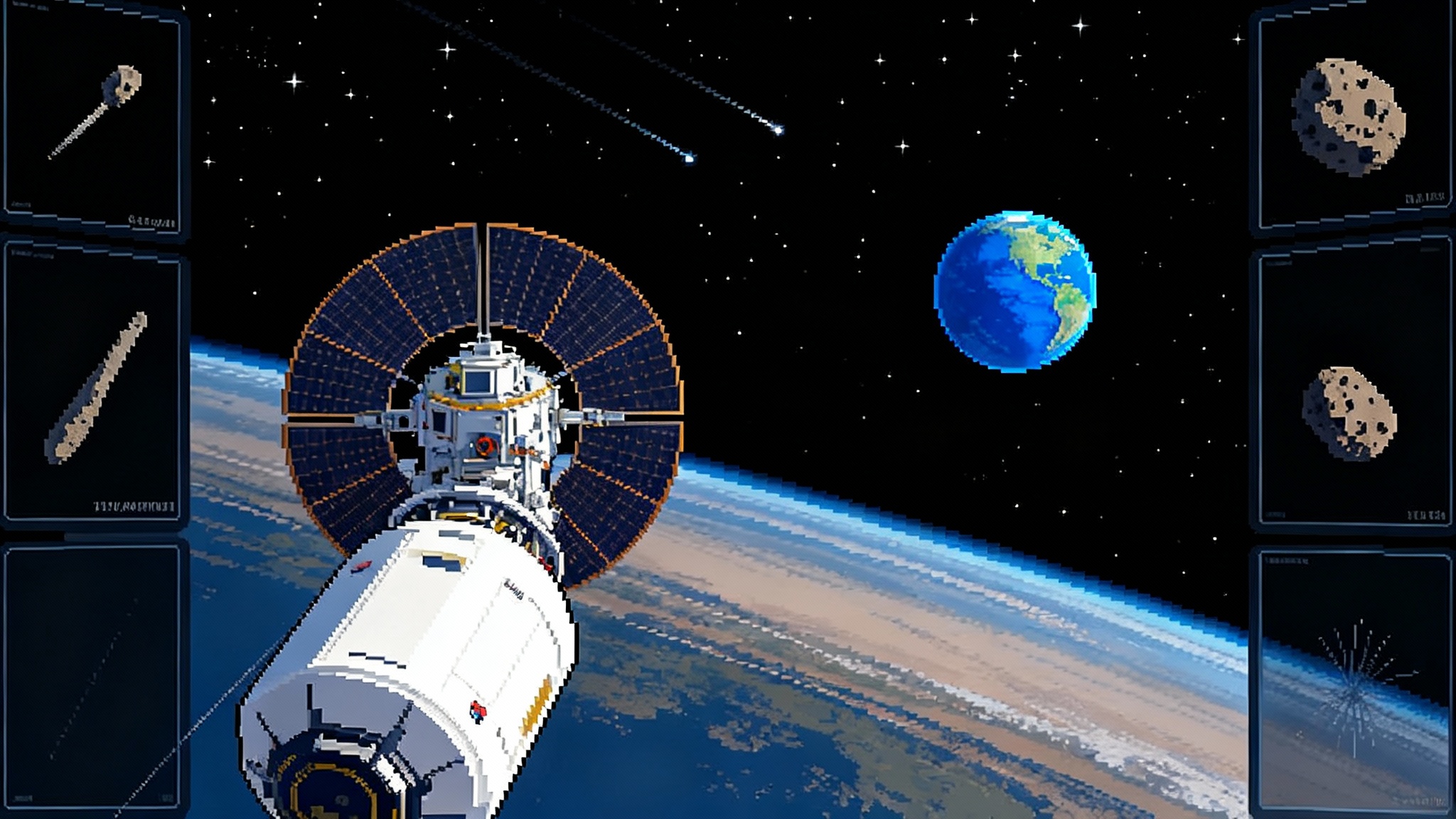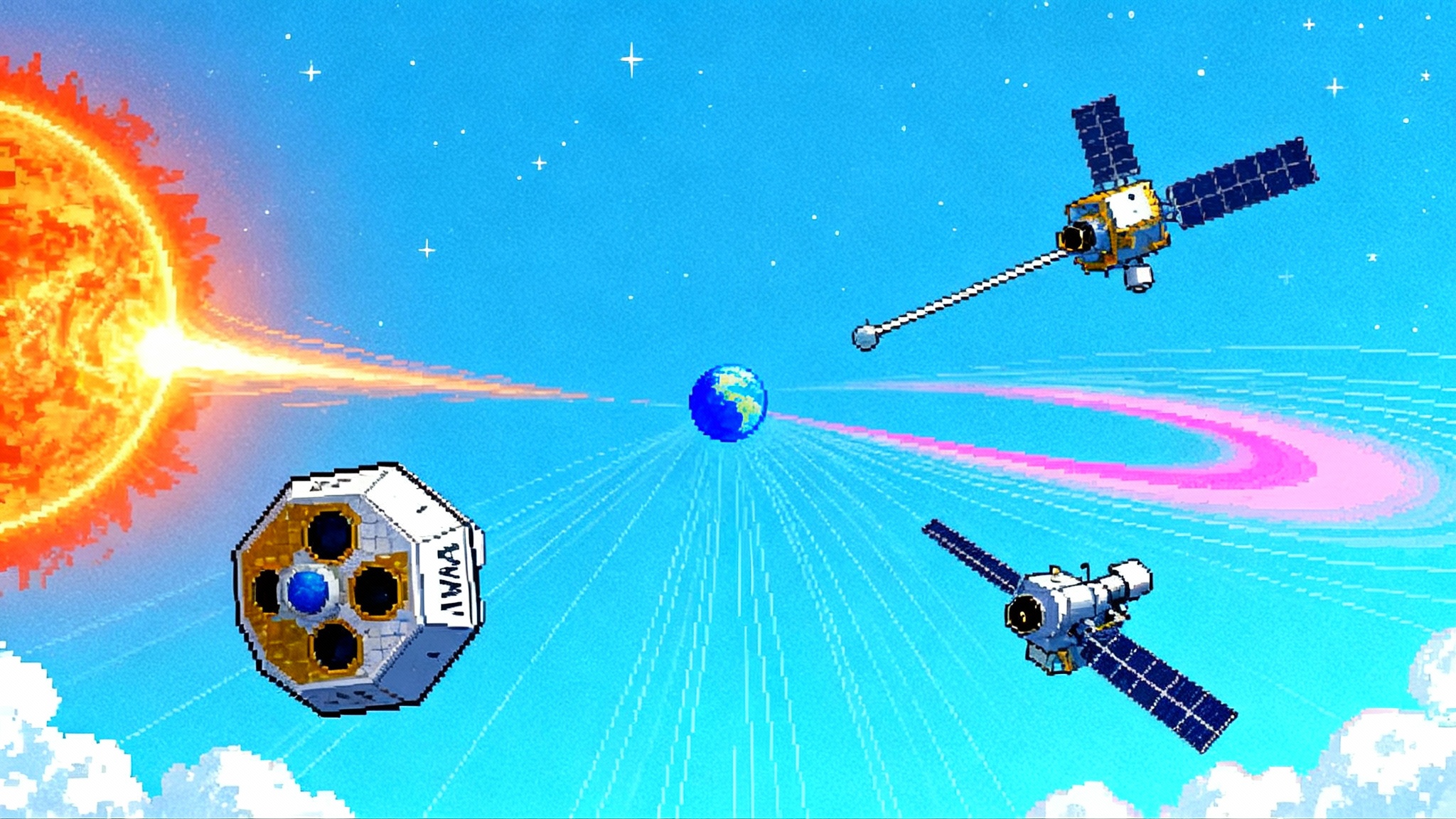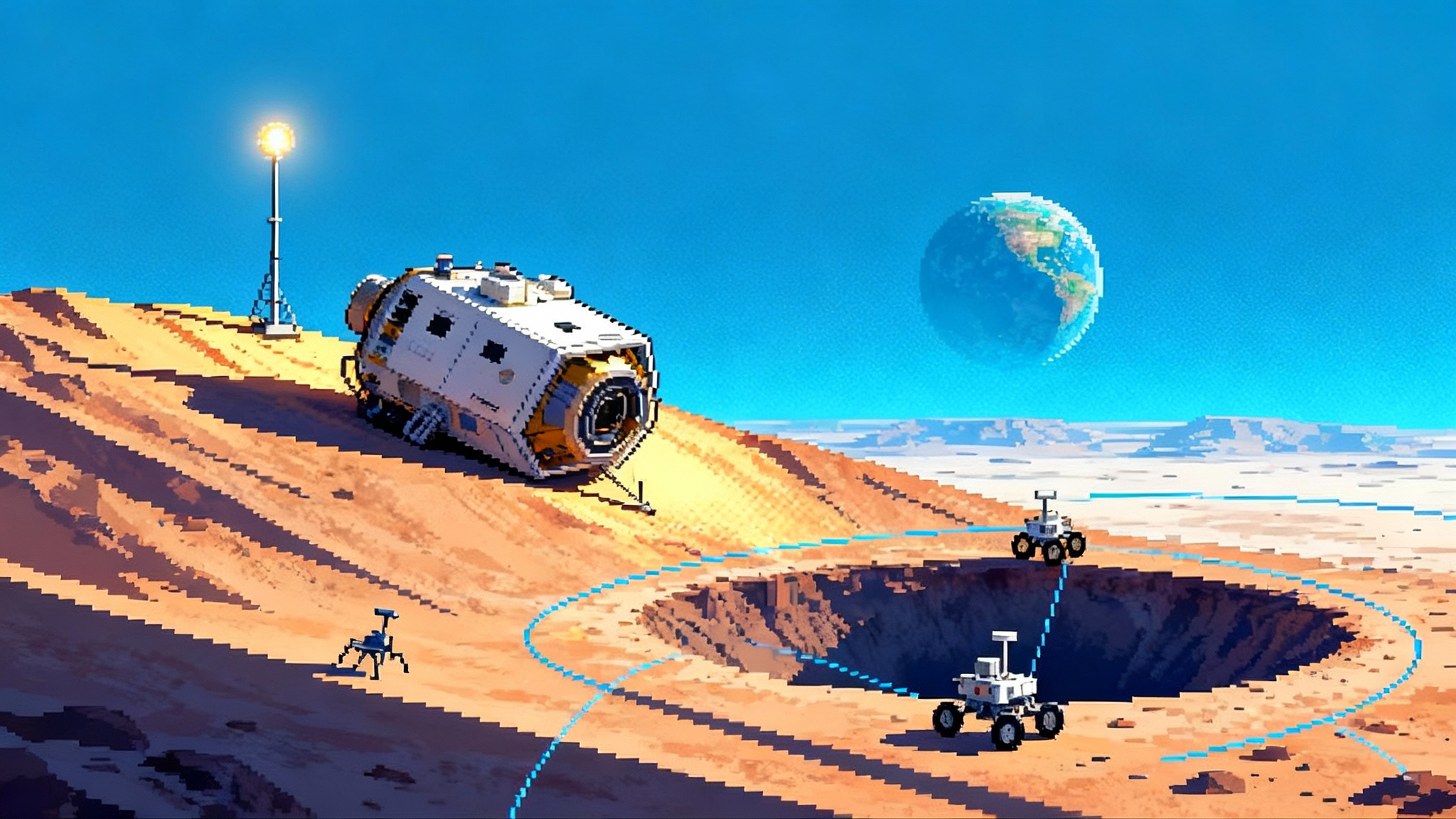A New Floor for Exoplanet Imaging: JWST Spots a Cold Saturn
Announced on June 25, 2025, JWST’s MIRI coronagraph revealed a likely Saturn-mass companion in TWA 7’s disk, potentially Webb’s first directly imaged planet. The result lowers the mass floor for space-based direct imaging and sets up a wave of discoveries through 2028.
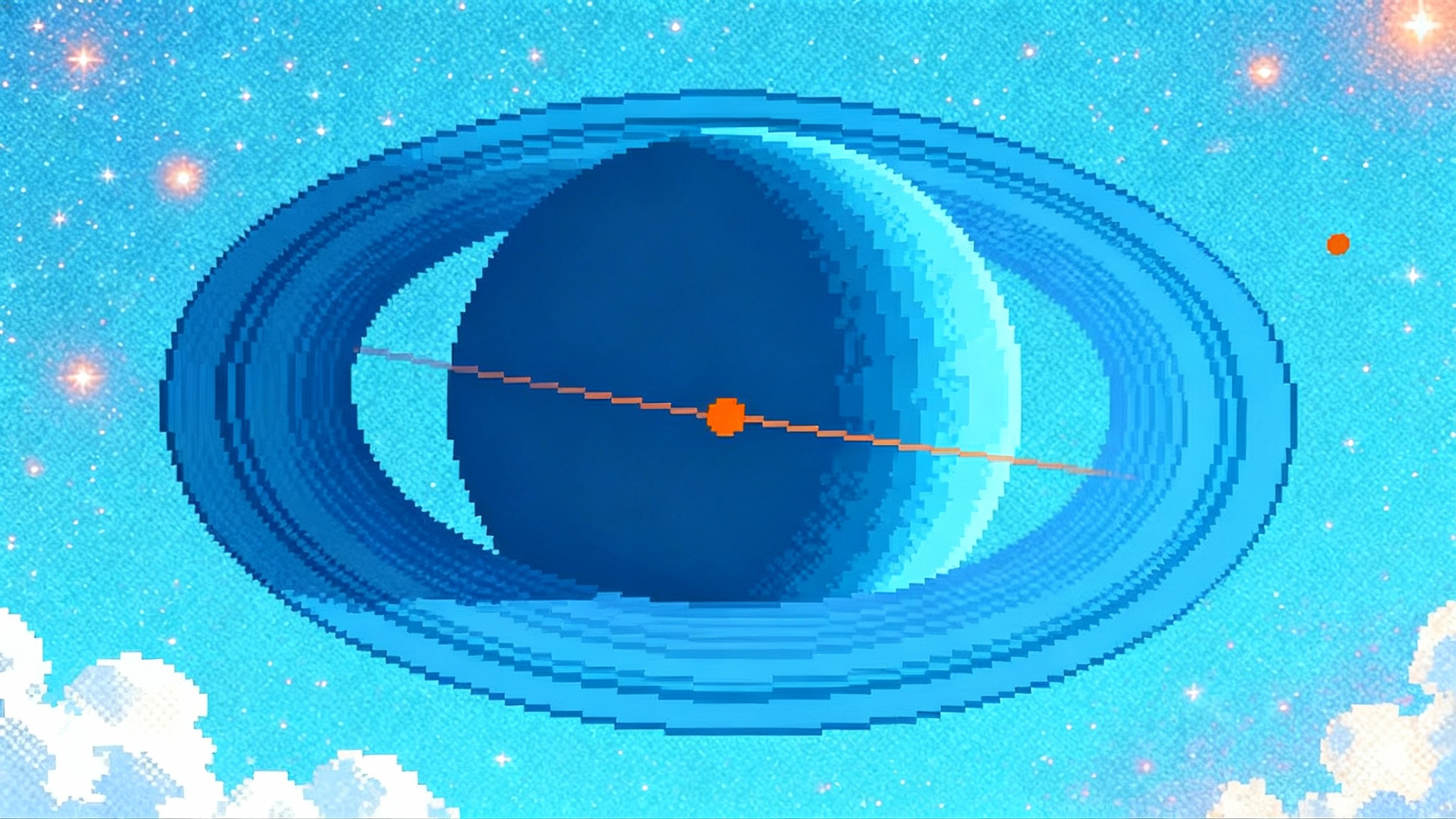
The moment the glare blinked and a planet appeared
On June 25, 2025, an international team announced a striking result: a compact mid-infrared source inside the dusty rings of the young star TWA 7 that fits the bill for a cold, Saturn-mass planet. The team used the James Webb Space Telescope’s Mid-Infrared Instrument, MIRI, with its coronagraph to block starlight and reveal a faint companion. If confirmed, this is Webb’s first planet discovery by direct imaging and the lightest planet ever seen with that technique in space. The candidate, labeled TWA 7 b, sits about 50 astronomical units from its star, right where a shepherd world should be if it is carving the visible gap in the debris disk. You can read the primary summary from the mission team in NASA’s post on a likely Saturn-mass planet imaged by Webb.
Why does this matter? Because it resets the expectations for what space telescopes can pull out of the starlight. For two decades, direct imaging from the ground captured a handful of massive, young Jupiters glowing in the infrared. Saturn mass is a different category. It means cooler, smaller, and dimmer. It means that the bar for detectability has moved down, and every notch downward brings a far richer population within reach. As our coverage of complementary survey missions like the SPHEREx 102-color sky map and Euclid’s 2025 releases reboot shows, the 2020s are aligning instrumentation and sky coverage to find what used to be invisible.
Why direct imaging matters, in plain terms
Astronomers usually find planets indirectly. Transits measure the drop in brightness when a planet crosses the star. Radial velocity measures the star’s wobble due to the planet’s gravity. Both are powerful. Both are also like learning about a city by its shadows and traffic report.
Direct imaging is the photograph. Once you separate a planet’s light from the star’s glare, you can do three things that are otherwise hard or impossible:
- Read the planet’s spectrum. Fingerprints of gases like water vapor, methane, and carbon dioxide reveal chemistry, temperature, and clouds from the planet itself.
- Watch the orbit directly. At wide separations where transits and wobbles struggle, motion on the sky exposes formation histories and how planets sculpt debris belts.
- Map planet–disk interactions. Rings, gaps, and asymmetries in dusty belts show where planets push and pull. Seeing both the planet and the structure it shapes turns sketches into blueprints.
The TWA 7 system offers all three. The disk has multiple rings. The planet candidate sits in a gap. The instrument suite can split the light to look for molecules. The result is not just a tally mark. It is a lab for how young systems clear their floors and build architectures.
How JWST’s MIRI coronagraph pulled it off
MIRI’s coronagraph is a finely machined traffic cone for light. It places a mask over the star to cancel the bright core of the point spread function. Then it uses deformable mirrors to sculpt a dark zone where remaining diffraction speckles are minimized. Finally, advanced post-processing subtracts leftover starlight using reference images and time series to isolate real sources. In the mid-infrared, young Saturns have a helpful trait: their thermal glow is relatively brighter than it is at shorter wavelengths. That boosts the planet signal while the coronagraph suppresses the star.
In the TWA 7 observation, the team also used the debris disk itself as a clue. A bright spot with the right color and brightness appeared exactly where models predicted a shepherd planet would live. Follow-up is essential to confirm common proper motion and exclude a background object, but the fit to the disk’s architecture is compelling.
The mass floor just moved
Until now, space-based direct imaging was more likely to confirm or characterize than to discover. A Saturn-mass result at roughly 300 kelvin shifts the conversation. It shows that Webb’s coronagraph can suppress starlight and that data processing is mature enough to fish out lower-mass worlds in real systems, not just in lab demonstrations.
That shift sets up a productive feedback loop. Webb can now target more disks where planet sculpting is suspected, pick out the brightest viable candidates, and hand those coordinates to future missions that work in reflected light. Each new detection refines models, which improves target selection, which raises the discovery rate. The flywheel is starting to spin.
What happens next with JWST
The path from candidate to confirmed planet is straightforward and fast by Webb standards:
- Multi-epoch imaging. Repeat MIRI coronagraphic images in 2026 to test common motion with TWA 7 and to track slight orbital motion. If the source stands still relative to the background sky, it is a contaminant. If it moves with the star, it is almost certainly bound.
- Mid-infrared spectroscopy. MIRI’s medium resolution spectrometer can break the light into enough detail to search for methane, water, and carbon monoxide. A cold Saturn should display methane absorption. The depth of those lines constrains temperature and cloud decks. If the spectrum looks more like a dusty brown dwarf, that would argue against a planet at this age and separation. The chemistry will decide.
- Shorter wavelength checks. NIRCam’s coronagraph can probe closer in and at different wavelengths, which helps distinguish a cool planet from a reddened background galaxy. It also lets astronomers look for additional companions interior to the current gap.
- Disk mapping. MIRI can image the thermal emission from the debris rings. Subtle asymmetries and sharp edges tell you how much mass the planet must have to do the shaping. Dynamical models that match both the planet location and the ring profiles will tighten the mass estimate.
These are concrete, 12 to 24 month steps. With Cycle 5 observations beginning in 2026, early answers could land well before Roman flies. For context on how agencies coordinate multi-mission campaigns, see our look at the IMAP space-weather stack at L1.
Roman’s coronagraph is next in line
The Nancy Grace Roman Space Telescope will carry a technology demonstration coronagraph that pushes reflected-light imaging into space. NASA integrated the instrument and maintains a not-later-than May 2027 launch plan. The agency’s overview explains the aim: validate wavefront control, high-performance masks, and ultra-low-noise detectors in orbit, which are the core ingredients for future life-finding missions. See NASA’s summary on the integrated coronagraph for Roman.
Key points for the next 24 to 36 months:
- Commissioning and early operations. Within roughly 12 to 18 months of launch, Roman’s coronagraph will allocate about three months of observing time for its demo program. That likely places first planet images and disk maps in 2028 if schedules hold.
- Contrast and inner working angle. In the lab, the hybrid Lyot and shaped pupil coronagraphs achieved raw contrasts at or below a few times ten to the minus eight in relevant bands. Post-processing will improve that further for bright, nearby stars. That performance opens reflected-light detections of known radial velocity giants and sub-Saturns around the very nearest stars.
- Target strategy. The sweet spot starts with nearby, high proper motion stars that already host long-period planets. Think epsilon Eridani, 47 Ursae Majoris, or similar bright systems where a reflective giant can be separated from the star by a few tenths of an arcsecond. Roman can also do polarimetry and low-resolution spectroscopy to distinguish clouds, hazes, and surface scattering in debris belts.
- Cross-calibration with JWST. For the best candidates, Webb provides thermal emission and Roman provides reflected light. Together they give albedo and energy balance, which are direct clues to cloud properties and atmospheric circulation.
Roman is not designed to find Earth twins. That is not the goal. It is designed to test every piece of technology we need for the next flagship while delivering real science on cold giants and disks. The TWA 7 b result is exactly the kind of discovery that stacks the deck for Roman’s early wins, by seeding a vetted target list and sharpening observing strategies.
What the 30 meter class will add by 2030
While space suppresses speckles, giant mirrors crush diffraction. The European Southern Observatory’s Extremely Large Telescope is now scheduled for first light in March 2029 and scientific first light in December 2030. The Giant Magellan Telescope continues construction in Chile and advanced to the National Science Foundation’s final design phase in June 2025. The Thirty Meter Telescope’s path remains uncertain given recent budget signals, but its technical design continues to evolve.
What matters for discovery is the combination of aperture and adaptive optics. A 30 to 40 meter telescope can resolve planet–star separations a few times closer than current 8 to 10 meter facilities and can feed high-dispersion spectrographs that separate planetary features from starlight by their distinct Doppler shifts. That technique, called high-dispersion coronagraphy, stacks a spectroscopic comb on top of a coronagraph to dig signals out thousands to one deeper than imaging alone.
Here is what that means in practical terms:
- Sub-Saturns around nearby M dwarfs. Small stars help the contrast and shrink the planet’s orbital separation into the reach of extreme adaptive optics. By 2030, ELT-class instruments should image several cool sub-Saturns and Neptunes in thermal emission within 10 to 20 astronomical units of the nearest M dwarfs.
- Debris disk physics at solar system scales. With resolution near a few milliarcseconds, the next generation can map rings, warps, and clumps at the scale of our asteroid belt in dozens of nearby systems. That lets teams measure collision rates, dust grain sizes, and the dynamical fingerprints of unseen planets.
- Spectra that read like weather reports. High-resolution spectra will separate carbon monoxide, water, and methane lines in moving air masses. By combining line shapes and planet rotation signals, observers can infer wind speeds and cloud patterns on wide-orbit giants.
These goals are not conjecture. They are the logical next step once you can already see a cold Saturn from space. The ground will go fainter and finer. Space will go steadier and cleaner. The two together shift exoplanet science from the census phase to the cartography phase.
What new discoveries are likely by 2028
If you want a tight forecast for the next 24 to 36 months, here is the short list worth tracking:
- Confirmation and first spectra of TWA 7 b. Expect a common-motion test and at least a coarse spectrum that distinguishes a methane-rich atmosphere from a dust-reddened contaminant. If confirmed, the community will have a template for cold, low-mass giants shaping debris rings.
- A handful of new cold giants in young debris disks. Using the same MIRI coronagraph modes and post-processing recipes, teams will target ringed systems within about 150 light years. The most likely catches will be sub-Jupiter to Saturn-mass worlds at tens of astronomical units, where their thermal glow peeks above the floor.
- First reflected-light images from Roman. The early demo program will aim at known giants with well-constrained orbits. A high-confidence detection with a low-resolution spectrum would be a signature success. Expect polarimetric images of bright debris disks with sharp inner working angles.
- Joint thermal plus reflected-light energy budgets for two or three nearby giants. Combining Webb and Roman measurements will pin down albedo, day–night heat transport, and cloud properties.
- Disk–planet interaction maps that link rings to masses. With more examples like TWA 7, models that use ring sharpness and asymmetries to infer planet mass will be benchmarked. That turns many disk images into indirect mass measurements without relying only on luminosity tracks.
Why this is a turning point, not a one-off
Direct imaging has always looked like the hardest way to find a planet. It asks you to erase a star from its own image. What changed is a fortuitous mix of maturing pieces. Coronagraph masks and deformable mirrors finally reached space at large scale. Algorithms learned to recognize and subtract speckles without erasing real planets. And observers realized that debris disks are not just pretty scaffolding. They are treasure maps. You do not need to search every angle. You follow the gaps.
That is why this new result matters beyond the single dot in a single image. It collapses the search space and raises the hit rate. It prepares Roman to spend its brief demo time on high-probability targets. It sets the table for the giant ground telescopes to push to cooler, smaller worlds around stars where the physics favors discovery.
What to do with this momentum
- Design follow-ups that decide, not just describe. For each candidate, define the two quickest tests that could eliminate the leading false positive and schedule them within a year. Time is a lever.
- Use disks as priors. Target rings and warps as if they were probationary planets. They are the shortest path to a mass measurement once a companion is in view.
- Build joint space–ground campaigns. Plan Webb thermal plus Roman reflected light plus extreme adaptive optics on the ground. The triple coverage turns spectra into energy budgets and orbits into formation histories.
- Prepare for Roman now. The community white papers and target lists sharpen what the coronagraph can deliver in a short window. Pre-compute planet positions from radial velocity and astrometric solutions so Roman can point once and see a planet.
The bottom line
The MIRI coronagraph detection of a likely Saturn-mass planet in TWA 7 is not just another exoplanet announcement. It is the first rung on a new ladder. We climbed down from Jupiter mass to Saturn mass in space. The next rungs are sub-Saturns and Neptunes in disks. Then reflected light from mature giants. Then high-resolution spectra from giant mirrors on Earth that read winds and clouds. By the time the Extremely Large Telescope reaches science first light in 2030, the field will have moved from spotting silhouettes and wobbles to drawing actual maps.
We did not simplify the game. We changed it. And the next 36 months are going to be busy.
